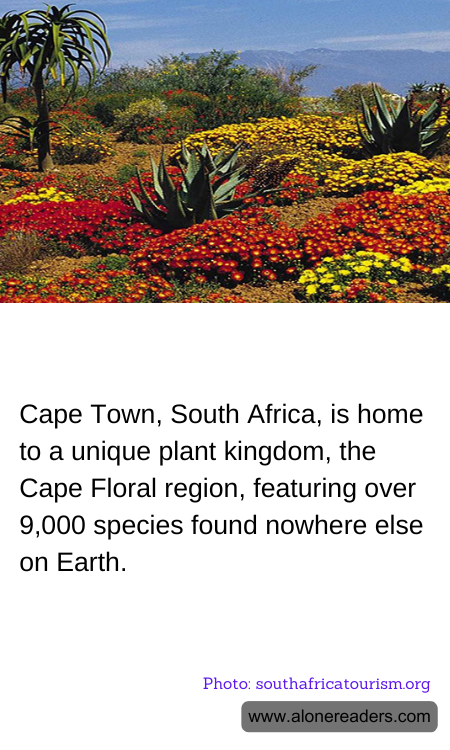
Cape Town, South Africa, stands out as one of the world’s richest flora regions, distinguished significantly by the Cape Floral Kingdom. Encompassing more than 9,000 plant species, it is the most diminutive yet most diverse floral kingdom globally. What makes this region particularly incredible is that over 69% of these plant species are endemic, found nowhere else on the planet.
This biodiversity hotspot stretches roughly from Cape Town eastwards towards the Eastern Cape, covering a range of landscapes from mountain slopes to coastal plains, all hosting different plant communities that have adapted to their unique environments. Among these species are the fynbos, a shrubland vegetation that includes proteas such as the King Protea, South Africa’s national flower. The region's plant life not only dazzles with its beauty but plays a critical role in the ecology of the area, supporting numerous animal species.
The uniqueness of the Cape Floral Kingdom also brings with it significant responsibilities. The region faces threats from urban development, agriculture, invasive plant species, and climate change. Each of these factors poses potential harm to the delicate ecosystems found within this area, which could lead to a loss in biodiversity and the extinction of endemic species. Conservation efforts are therefore paramount, involving both local and international stakeholders working together to preserve and protect this irreplaceable natural heritage.
Efforts to maintain and restore the Cape Floral region include the establishment of protected areas and nature reserves, sustainable tourism practices, and educational programs aimed at raising awareness of the importance and uniqueness of this biodiversity hotspot. Moreover, ongoing research and monitoring are crucial for understanding the impacts of environmental changes and for implementing effective conservation strategies.
The Cape Floral Kingdom not only enhances South Africa's natural beauty but also contributes significantly to its tourism industry, drawing nature enthusiasts, hikers, and scientists from across the globe. The sustainability of this area is vital for ecological balance, economic development, and heritage preservation, making it a cherished natural treasure not just for South Africa, but for the world.